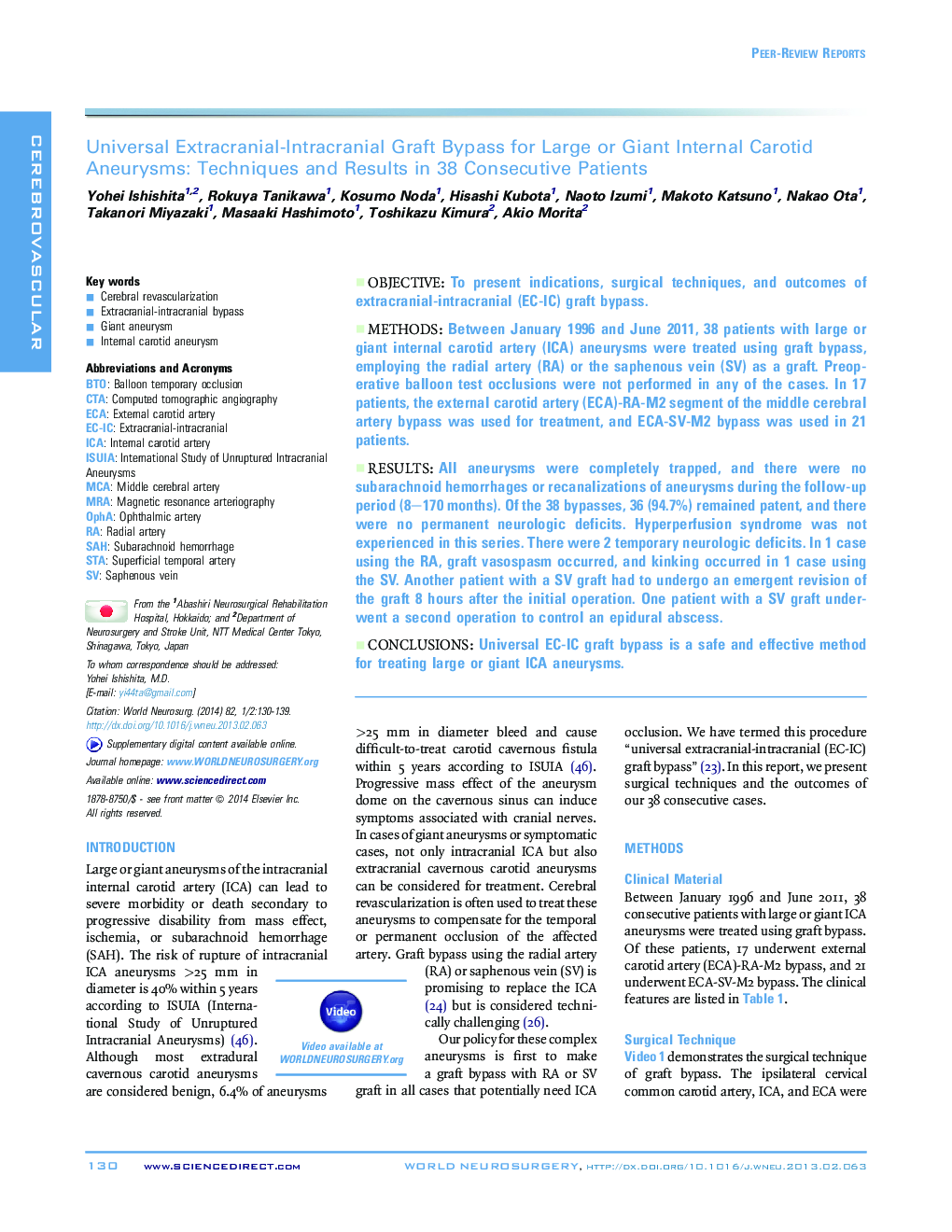| Article ID | Journal | Published Year | Pages | File Type |
|---|---|---|---|---|
| 3095539 | World Neurosurgery | 2014 | 10 Pages |
ObjectiveTo present indications, surgical techniques, and outcomes of extracranial-intracranial (EC-IC) graft bypass.MethodsBetween January 1996 and June 2011, 38 patients with large or giant internal carotid artery (ICA) aneurysms were treated using graft bypass, employing the radial artery (RA) or the saphenous vein (SV) as a graft. Preoperative balloon test occlusions were not performed in any of the cases. In 17 patients, the external carotid artery (ECA)-RA-M2 segment of the middle cerebral artery bypass was used for treatment, and ECA-SV-M2 bypass was used in 21 patients.ResultsAll aneurysms were completely trapped, and there were no subarachnoid hemorrhages or recanalizations of aneurysms during the follow-up period (8–170 months). Of the 38 bypasses, 36 (94.7%) remained patent, and there were no permanent neurologic deficits. Hyperperfusion syndrome was not experienced in this series. There were 2 temporary neurologic deficits. In 1 case using the RA, graft vasospasm occurred, and kinking occurred in 1 case using the SV. Another patient with a SV graft had to undergo an emergent revision of the graft 8 hours after the initial operation. One patient with a SV graft underwent a second operation to control an epidural abscess.ConclusionsUniversal EC-IC graft bypass is a safe and effective method for treating large or giant ICA aneurysms.
